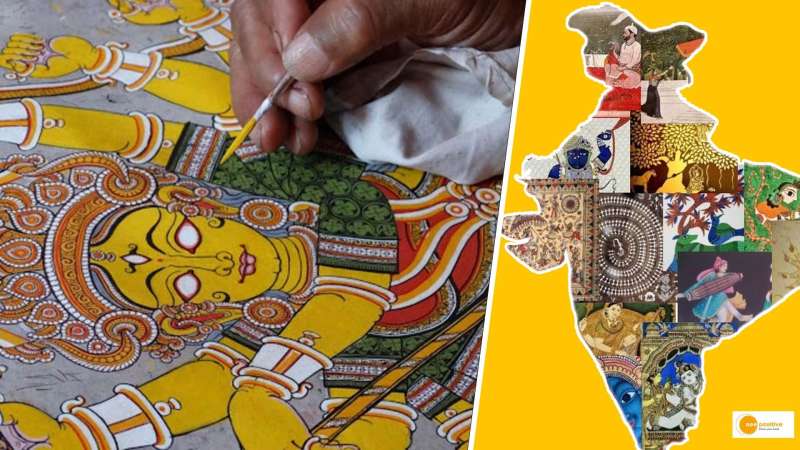

India is well-known for its ethnic and cultural diversity. Every state in the country has some incredible art, culture, and heritage sites. There are over 2500 tribes and ethnic groups in the country. Every indigenous community has worked hard to keep its own art forms, traditions, and cultural heritage alive. Some of these art forms have been lost as society has progressed, but some have managed to revive themselves with the modern trends.
Many of these ancient arts have been preserved by incorporating them into home decor or textiles. Let’s look at a few of these art forms.
1. Warli paintings:

Warli paintings date back to the 10th century AD and originated in Maharashtra’s North Sahyadri range. Wildlife and natural wonders have a significant influence on Warli art. This influence can be seen in the use of simple geometric shapes to represent aspects of nature and humans. The depiction of their traditional dance, known as “Tarpa,” is also noteworthy. Warli paintings were typically created on the walls of homes. For painting, a liquid mixture of rice flour, water, and gum is used. Warli paintings are a way for future generations to learn about the Warli tribe’s customs, traditions, and mythology.
2. Santhal paintings:

This art form arose during the pre-Aryan period. They are painted by a distinct group of people known as Jadu Patua, or magic painters, who live in the Santhal Pargana region of West Bengal and Bihar. These paintings depict simple themes such as a wedding, a harvest, music, and daily rituals. These paintings primarily feature human figures. The figures are stark but accurate. These paintings are made on handmade paper and occasionally on cloth canvas. The colours used are derived from vegetables.
3. Madhubani paintings:

This is from Bihar’s Mithila region. The districts of Madhubani and Darbhanga are regarded as the birthplace of the art form. The majority of artists are rural women who express themselves through two-dimensional images created with twigs on freshly built mud walls in their homes. It also makes use of plant and vegetable-based colours.
The subjects of these paintings are Hindu deities. This painting’s outstanding features include the use of traditional geometric patterns, a double-line border, abstract-like deity figures, and elaborate floral patterns.
4. Pithora paintings:

The Rathwa, Bhil, Nayak, and Tadi tribes of Gujarat, Rajasthan, and Madhya Pradesh have preserved this tribal art form. The tribes practice this art form to express gratitude to God or to grant a wish. Traditionally, the motifs are created solely by the tribe’s men. They use vibrant natural and synthetic colours to create the paintings. Pithora art is dominated by deities, horses, the sun, and the moon.
5. Saura paintings:

The saura tribe, which lives in the hilly areas of south Odisha’s Koraput, Ganjam, and Gajapati districts, creates saura paintings. Saura paintings depict nature, social life, animals, and tribal gods and goddesses.
The paintings depict the sun, moon, icons of the Guardian Spirits, and ghosts. These paintings are done on the walls of homes. Black, yellow, and blue are occasionally used to enhance the visual impact. Brushes made from palm twigs are used to paint.


